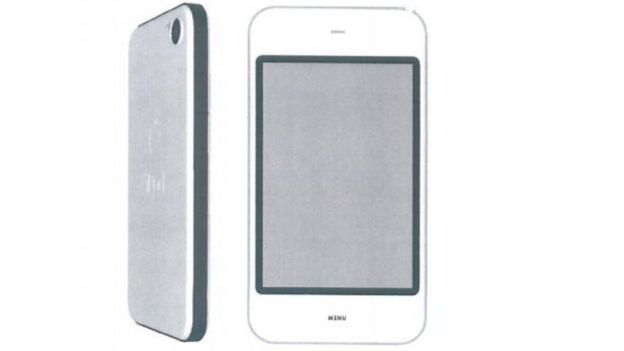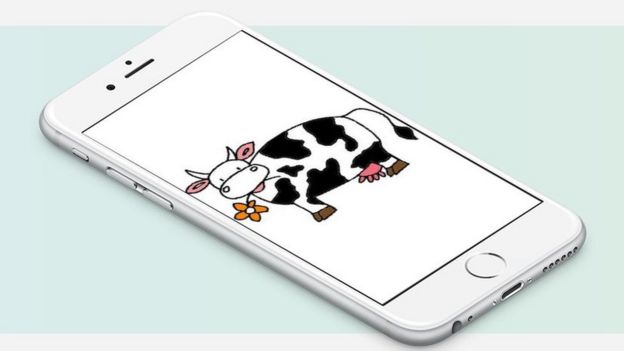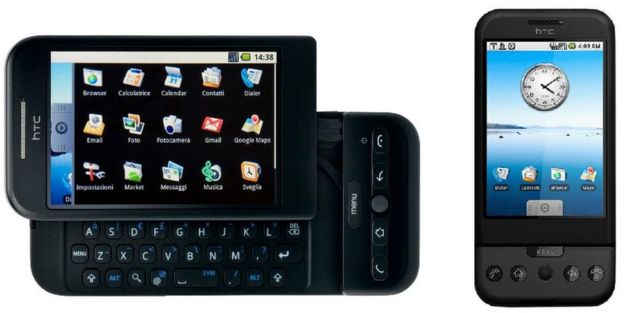iPhone X: 10 key moments leading up to the new handset
 GETTY IMAGES
GETTY IMAGES
Apple's 10th anniversary iPhone launch is expected to be the biggest single upgrade the handset has seen since its launch.
A revamped design with an edge-to-edge display, facial recognition ID system and advanced augmented reality features is expected.
Several analysts have predicted the asking price for the top-end models will hit new heights too.
In a world in which the smartphone has become ubiquitous, it's easy to forget how much of a surprise Steve Jobs's unveiling of the original was a decade ago, and how divided opinion was about whether it was truly a game-changer.
To mark the occasion, we have picked 10 key moments from its past.
1. 2004: The birth of Project Purple
 APPLE
APPLE
After the success of first the iMac and then the iPod, Apple began developing a tablet as its next breakthrough product.
But around 2004, ex-iOS chief Scott Forstall recalls having a critical conversation over lunch with chief executive Steve Jobs.
"We were both using our phones and hated them," he told an audience earlier this year.
"We looked around, and like everyone around us has a phone, and everyone looks very angsty as they're using them.
"And Steve said, 'Do you think we can take that demo we are doing with the tablet and multi-touch and shrink it down to something… small enough to fit in your pocket?'"
This prompted Apple's engineers to create a basic contacts app that was constrained to a corner of the prototype tablet's display.
"The second [Steve Jobs] saw this demo, he knew this was it," Mr Forstall said. "There was no question. This was the way a phone had to behave."
As a legal filing would later reveal, by August 2005 Apple's industrial designers had already created a concept form factor - codenamed Purple - that is recognisable as the basis for the iPhone that followed.
2. July 2008: First iOS App Store apps released
 ERICA SADUN
ERICA SADUN
There are now well over two million native apps available for the iPhone's iOS operating system, and most owners have several pages and folders worth of the programs.
But for a while, after the first iPhone launched, there weren't enough to fill even a single screen.
That's because third-party developers were initially limited to creating software that ran within the device's web browser. Steve Jobs reportedly believed policing a native app marketplace would be too complicated.
It wasn't until more than a year after the handset went on sale that the App Store was launched.
And history was made on 9 July when Apple made a handful of native apps live in advance of the marketplace opening its virtual doors.
Among them was Moo - a cow sound simulator - from Denver-based developer Erica Sadun.
"I had come from the jailbreak community [in which developers modify smartphones to add capabilities], which put a lot of pressure on Apple to have its own store," Ms Sadun said.
"The App Store completely revolutionised how independent developers could create businesses, monetise their product and present it to a community of people that was larger than anybody had ever dreamed of.
"It created a gold rush that I don't think we are ever going to see again."
3. September 2008: HTC Dream unveiled
 HTC
HTC
It sounds fanciful now, but once upon a time Google's chief executive was a member of Apple's board of directors.
Eric Schmidt did not resign from the post until 2009, but his days were numbered as soon as the first commercial Android phone was announced.
The HTC Dream offered features the iPhone still lacked, including copy and paste, Street View and multimedia messaging.
And while reviews were tepid - suggesting it was "best suited for early adopters" - they recognised the potential of a more open smartphone platform to iOS.
Curiously, the Dream was theoretically capable of supporting "multi-touch" gestures - recognising how many fingers were in contact with the screen - but the feature was disabled.
That was probably because Apple had patented the technology.
When HTC added the feature to a follow-up handset in 2010, Steve Jobs was infuriated.
"I'm going to destroy Android, because it's a stolen product," he subsequently told his biographer Walter Isaacson.
"I'm willing to go to thermonuclear war on this."
4. February 2010: Siri app released by SRI
 GETTY IMAGES
GETTY IMAGES
These days, Apple spends millions making adverts starring Siri and Dwayne "The Rock" Johnson, among other celebrity co-stars.
But when the virtual assistant was first released on iOS, it was a relatively low-profile app from a fairly obscure Californian research institute, which had been part-funded by the Pentagon.
Its business model was to charge restaurants and event promoters a fee for any voice-controlled bookings made for their businesses, and the plan was to release follow-up versions for Android and Blackberry.
But that changed two months after its launch, when Apple bought the technology, reportedly for more than $200m (£150m).
The app remained live on the App Store until October 2011, at which point an upgraded version became an exclusive feature for the newly launched iPhone 4S.



0 comments: